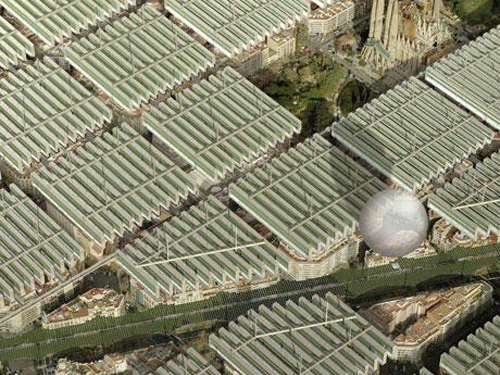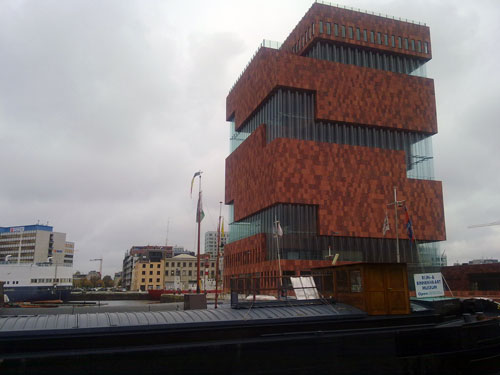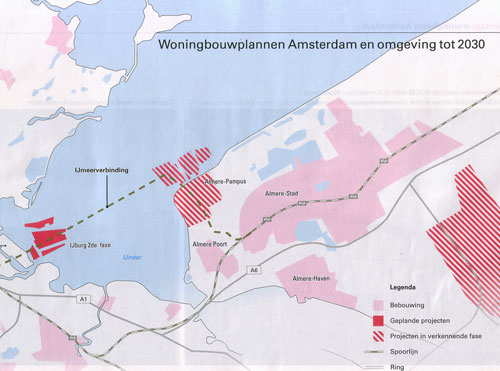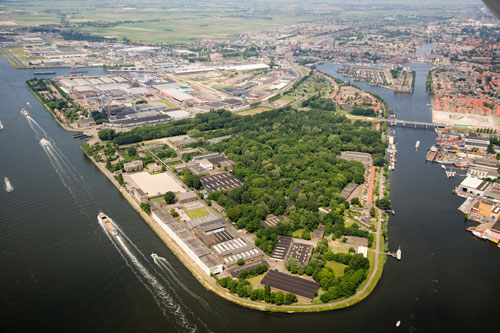15 floors in 2 days, no further comments…
Bas van Galen, thanks for the tip.
Category Archives: Architecture
Out My Window
Out My Window is a beautifully interactive tour around the world, looking out the window of people’s homes in highrise buildings, directed by Katerina Cizek.
“[…] one of the world’s first interactive 360 ̊documentaries – about exploring the state of our urban planet told by people who look out on the world from highrise windows. Its’s a journey around the globe throught the most commonly built form of the last century: the concrete-slab residential tower. Meet remarkable highrise residents who harness the human spirit – and the power of community – to resurrect meaning amid the ruins of modernism. With more than 90 minutes of material to explore, Out My Window features 49 stories from 13 cities, told in 13 languages, accompanied by a leading-edge music playlist.”

Yvonne Rijpers, thanks for the tip.
Urban farming 2010
This year, Urban farming is a hotter topic than ever before…
“In February, Mayor Mike McGinn and Seattle City Councilmembers announced the “2010: The Year of Urban Agriculture” campaign to promote urban agriculture efforts and increase community access to locally grown food.”
… and not only in Seattle. September this year, at the Rotterdam Harvest (Oogst) Festival, the planning department of Rotterdam presented a plan for urban agriculture in that city. Local urban agriculture organizations are mushrooming around the globe and dozens of debates and events are held.
Let´s see what else is going on in urban agriculture and which questions are at the center of the current debate.

1: Urban agriculture as an answer to urban decay
Many initiatives for urban agriculture arise from the existence of urban voids. Abandoned urban land is often the result of financial crises and loses its productive function during a period of time. The Zuidas development area in Amsterdam, for example, is rather paralised by the current real estate crisis and therefore copes with vacant lots at this moment. Temporarily an entire block has been transformed into a corn field with a pig farm and tennis courts in the middle.
September this year Stipo and Cities organized the seminar ‘Farming the City: Temporary Urban Agriculture in Amsterdam’, to explore current trends in urban agriculture and ways to stimulate initiatives in temporary use of vacant land for farming. A number of questions were posed: How can the (economic) benefits of urban agriculture be assessed? How can excessive bureaucracy around this kind of temporary use be avoided? How to deal with pollution in urban brownfields? How to organize and represent all small initiatives together?
In Detroit, more than just a temporary crisis occurs. The vast abandoned inner city areas are screaming for new use and the city is desperate for new jobs, after GM and other automobile manufacturers went bankrupt. Fast Company writes:
“A quarter of the city is nothing more than vacant lots–40 square miles of “urban prairie.” […] And what will Bing [the mayor] do with all of that empty space? Turn over as many as 10,000 acres to John Hantz to farm.
The owner of an eponymous financial services firm, Hantz is prepared to sink $30 million of his personal fortune into coaxing peaches, plums, lettuce, and heirloom tomatoes from the ground (or in hydroponic greenhouses). In exchange, all he’s asking for is free tax-delinquent land and tax breaks on agriculture. The city is considering giving him both. Hantz told Fortune he’s aiming for an average cost of $3,000 per acre, valuing it no differently than outlying farmland. But he also promises to create hundreds of green jobs, grow a surplus of fresh produce for residents, attract tourists, and “reintroduce Detroiters to the beauty of nature.”

2: Urban agriculture as sustainable metropolitan food production
Despite all great initiatives and ideas, an important question remains whether urban food production can replace traditional country side farming. The Why Factory (TUDelft), with MVRDV and Stroom Den Haag investigated the possibility of producing food for the city The Hague, in the Netherlands, completely within the existing city limits. This turned out to be quite impossible or at least undesirable. A study of intensive food production in Barcelona gives a similar result. And even if it worked, if the entire food production of cities could take place inside the city itself, what on earth would become of the countryside? Jungle?

This does not mean, however, that urban agriculture leads nowhere. Perhaps the goals of urban agriculture should be set differently, for example emphasizing on social, cultural and ecological aspects, and not so much on economic effects. In the master plan for the suburban Shenyang university campus, a special role was maintained for the traditional rice cultivation in the area, as a landscape element. Besides creating a comfortable and interesting green space for students and employees, part of the land actually remains agricultural in a new urban context.

3: Urban agriculture: farming or gardening?
Indeed it seems unavoidable that part of our food, especially wheat, corn, soy etc., will be produced outside the city. Fresh vegetables, chickens and fruits, on the other hand, can perfectly be grown in urban areas, while at the same time providing a pleasant job or hobby for the inhabitants. This type of urban gardening fits perfectly with the existing local community initiatives, that mix food production and gardening with social networking, exchange of healthy recipes etc., for example as happens at re:farm the city. And yes, why shouldn´t the authorities promote and stimulate these activities?

And in case of an emergency, a city like Amsterdam could always produce its own food using empty office buildings. According a project by Jurgen Hoogendoorn (municipality of Amsterdam), green areas such as parks are way too small. If the current 1,3 million square meters of empty office space were transformed into highly productive greenhouses with LED lamps, just like illegal cannabis farms, food could be produced for about 2,6 million people.
Eilandje (Antwerp)

Het Eilandje (The little Island), in the middle of a swampy tidal stream connected to the Schelde river, became part of the harbor of Antwerp in the golden age, when large numbers of cargo ships sailed into the city´s docks. When the port area consolidated later on, the island remained, between the Willems- and Bonaparte docks. It used to be a lively harbor quarter with the usual bars and nightlife.

By the 1980´s, Het Eilandje had become a rather abandoned and rundown neighborhood. The still populated sites in the area were indicated for urban renewal. State subsidies were considered to let inhabitants renovate their dwellings. However, this didn´t stop the decline of the neighborhood, which in the end attracted real estate developers and investors. Ground prices started rising and bit by bit gentrification took hold of Het Eilandje.
The municipality stimulated the redevelopment of the area by building the Museum Aan De Stroom (MAS), designed by Dutch architects Neutelings Riedijk, which opens in May 2011.


Read more:
www.eilandje.be
http://nl.wikipedia.org/wiki/Eilandje…
Amsterdam – densification or expansion?

Amsterdam desperately needs more dwellings. These can be built along the Zaan axis, north of the city center, or by expanding satellite town Almere, west of Amsterdam. At the same time, a third project, the office district Zuidas, is already under development. In January this year, politicians have decided to give the go-ahead for a plan to build 60.000 dwellings near Almere, almost doubling the city in size. Since the economic recession of 2008-2009, it has become clear that the city cannot pay for all three projects at the same time. Criticism is mushrooming among experts in spatial planning.

Possible industrial redevelopment sites at the riverbanks of the IJ and the Zaan.
The Council of State Advisers has expressed doubts regarding the Almere expansion. It is an expensive alternative, since a new bridge would have to be constructed to the island Flevoland, costing over 4 billion euros (70.000 per dwelling). Furthermore, the concept of Almere as a satellite town is in essence very unsustainable. Most Almere workers commute daily to Amsterdam by car. More and more, the advantages of redeveloping the riverbanks near the center of Amsterdam are put forward: They are places with strong identity and history. The Zaan region was the first industrial zone in the world, which at the time thrived on small wind powered industries, shipbuilding and waterway logistics. The re-urbanization of this area would happen almost naturally, contrary to the massive State investments needed for Almere 2.0.

Possible expansion sites near satellite town Almere.

Read more:
Stop de Nieuwbouwwijken – article by Tijs van den Boomen and Theo Baart in NRC Handelsblad (Dutch)
Prachtig compact NL – publication by College van Rijksadviseurs (Dutch)
www.zaanstreek.nl